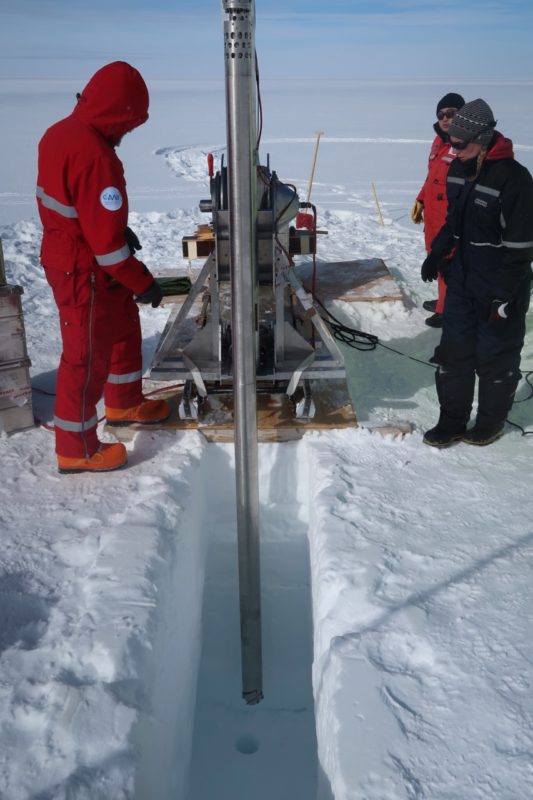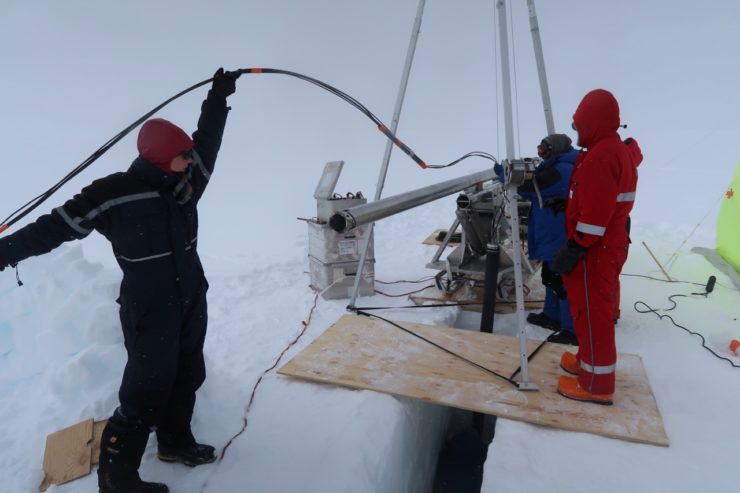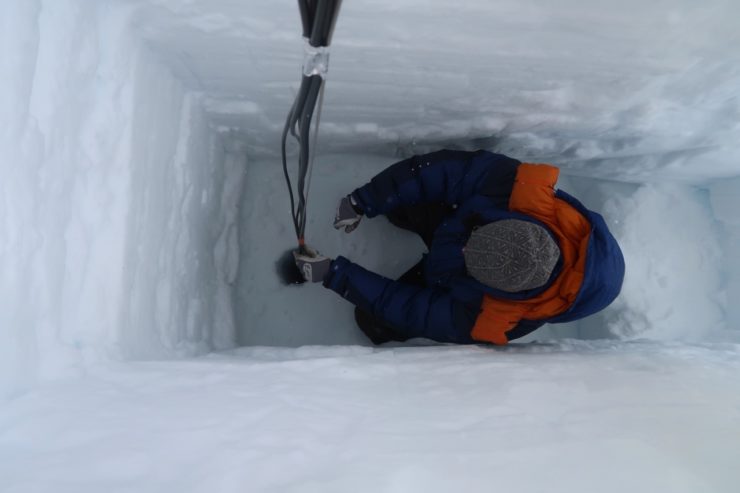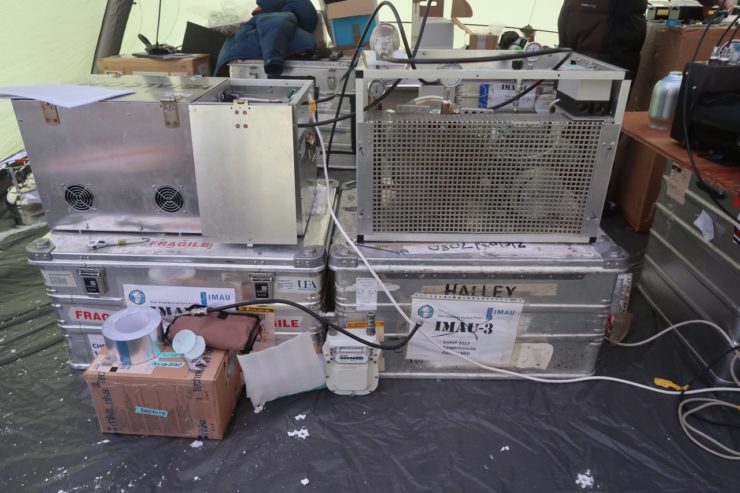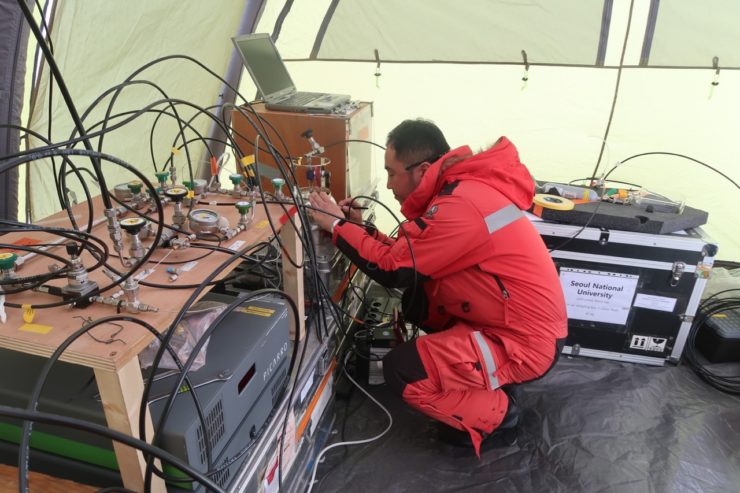Blog
Day 8: Firn sampling continues
Today was a “white day” with very little contrast. A lot of the day you could not distinguish earth from sky. 
We managed to drill and sample air in many canisters from two more levels, 8 and 12 meters. The drilling went relatively smooth, but the firn core is still very soft and fragile, so it breaks often and sometimes pieces were left in the hole. Here you see how the drill is lowered into the hole. Since it is impossible to position the drill always exactly at the correct position (it is mounted on a sled that we have to turn back and forth to insert the bladder) one of us needs to place it carefully into the hole.
After drilling, the bladder is inserted into the hole. The bladder is a 3 m long “sausage” made from rubber. In the following photos you see how the bladder is lowered into the hole when a target depth has been reached. Since the bladder is soft and bends easily, we need three people to carry it because the tubing inside should not bend too much. In addition, the top of the bladder is connected to 100 m tubing, that we will need when the hole is deeper. The bladder is then fixed to a steel rope on a tripod and inserted carefully into the hole and lowered to the bottom. Then the hole is covered so that nothing falls inside (today it was also snowing…).
When this has been done, we pump air into the bladder through one of the tubes and pressurize it like a balloon, but since it cannot expand to the sides, and the top and bottom are from metal, it pushes hard against the walls of the hole. This way the bladder creates a seal so that no air from above can get down to the bottom of the hole. Then we start pumping out the air below the hole. We control all the pumps and compressors from the tent, and fill up to 9 different flasks from each depth. The biggest amounts of gas are actually for my high pressure cylinders, where we collect about 500 l of air! This worked at both levels today, so we filled the first two high pressure cylinders. Unfortunately, the high pressure compressor is losing some air and it takes almost 2 hours to fill a cylinder, but in the end I was very happy to have the first larger samples.
Tomorrow I will write about life in the EGRIP camp.


